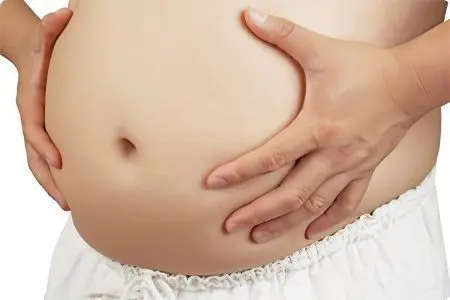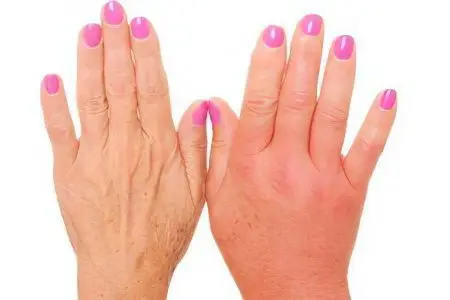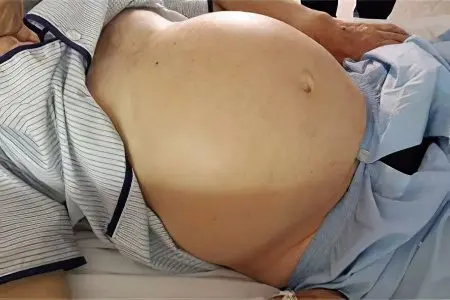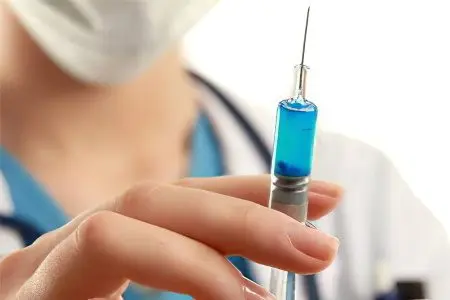Contents
This name belongs to several forms of the same symptom – the accumulation of fluid in the subcutaneous tissue, in the serous cavities, in the tissues of the brain. With dropsy, the balance between the inflow and outflow of tissue fluid and the liquid substance of the blood is disturbed.
Dropsy – what is this disease?

Dropsy (edema) is an excessive accumulation of fluid in the subcutaneous fat, tissues or serous cavities of the body.
It would be wrong to say that dropsy is an independent disease. Most often, swelling of the tissues of the subcutaneous tissue is a symptom of the pathology of some organ. Tissues with loose subcutaneous tissue are most susceptible to edema. Puffiness occurs due to the fact that the transudate from the vessels comes out through their walls into the surrounding tissues, and reabsorption does not occur, or is extremely slow.
There are the following forms of dropsy:
General dropsy – the water balance of the body is disturbed (heart disease);
Local dropsy – the fluid balance in a separate organ or in a limited area of uXNUMXbuXNUMXbthe body is disturbed due to compression of the veins (for example, ascites, swelling of the extremities).
Classification of edema with dropsy:
Congestive – occur due to impaired capillary circulation, outflow of venous fluid (liver cirrhosis, heart failure, phlebothrombosis);
Hypooncotic – arise due to a violation of the concentration of proteins in the blood, depletion of its albumin (nephrosis);
Membraneogenic – arise due to impaired capillary permeability (hypoxia, toxic damage by poisons, waste products of bacteria, hyperthermia);
Lymphatic – occur due to a violation of the outflow of lymph (hypoplasia of the lymph nodes, the reaction of the immune system to the oncological process)
Symptoms of dropsy

Under the pressure of the watery fluid in the subcutaneous tissue, the skin swells, resulting in an increase in the volume of certain parts of the body of a sick person. In the area of edema, the skin may resemble dough. On palpation of edematous tissues, the pits formed by light pressure remain on the skin for a long time after the exposure has ended. Pallor and cooling of the skin is noted, which is associated with a violation of the blood supply to the tissues due to compression of the blood vessels by edematous fluid. Dropsy forms a clear liquid, which contains protein in a very low concentration.
Edema is a characteristic symptom of a wide variety of diseases and pathological conditions. It is an important diagnostic sign for physicians when examining patients suffering from general or local circulatory disorders, kidney diseases, disorders of water-salt metabolism regulation systems.
According to the place of localization, dropsy is divided into local and general. Local edema is caused by a violation of the inflow and outflow of fluid in a separate area of uXNUMXbuXNUMXbthe tissue or in a certain organ; in most cases, the cause of such dropsy is compression of the venous vessels. Blockage (compression) of the portal vein causes ascites, which is also called dropsy of the abdominal cavity, and impaired circulation in the femoral vein causes swelling of the legs.
General dropsy leads to a violation of the water balance throughout the body, as can be judged by cardiac edema. The main reasons that lead to a change in the balance of fluid flow in limited areas are: an increase in fluid pressure in small vessels (capillaries), a decrease in plasma oncotic pressure, an increase in interstitial fluid oncotic pressure, a decrease in pressure on tissues, high permeability of capillary vessels, a violation of reverse flow plasma.
Considering the factor that becomes the leading factor in the development of the pathological process, dropsy is divided into mechanical, hypooncotic, membranogenic and lymphatic. Mechanical, or congestive, edema occurs due to high hydrostatic pressure in small blood vessels and disruption of the reverse flow of venous blood caused by blockage or mechanical compression of the blood vessels. Such pressure can be exerted by a pregnant uterus and an enlarged liver. The cause of blockage of the veins may be phlebothrombosis.
With a decrease in the concentration of protein in the blood, hypooncotic edema may develop, while the protein content does not exceed 50 g / l. In this case, the low content of albumins in the blood (below 25 g / l) is of the greatest importance, since they are characterized by a greater osmotic activity than globulins. The maximum drop in oncotic pressure and extensive edema accompany nephrotic syndrome.
An increase in the oncotic pressure of the interstitial fluid, accompanied by a change in the permeability of capillary membranes and sweating of a protein-saturated filtrate in the tissue, is an important factor in the formation of edema of any origin. Edema that occurs in acute nephritis, heart and respiratory failure, is closely related to increased membrane permeability. Cell membranes can be affected by toxins (snake venom, bacterial toxins, poisonous substances, fever).
Symptoms of dropsy of lymphatic genesis occur when the reverse flow of lymph is disturbed, which causes the accumulation of fluid saturated with protein. Changes in the flow of lymph and associated edema accompany congenital hypoplasia of the lymph nodes, their malignant degeneration, nephrotic and hungry edema, as well as ascites.
Types of dropsy

There are several varieties of dropsy, characterized by the following clinical manifestations:
Ascites, or dropsy of the abdomen. With ascites, a large amount of serous or hemorrhagic transudate (free fluid) accumulates in the abdomen, from 8 to 30 liters. More often this amount is less in volume – from a liter and above. The skin of the abdomen with ascites is tense, smoothed, umbilical and femoral hernia are observed. The abdomen has a spherical shape, it protrudes forward or hangs down. A complication of ascites may be peritonitis due to rupture of the navel, swelling of the feet, prolapse of the rectum.
Hydrocephalus, or hydrocephalus. With hydrocephalus, there is an accumulation of CSF (cerebrospinal fluid) in the ventricles of the brain and under its membrane. Dropsy of the brain can be congenital or acquired. Children with hydrocephalus lag behind in development, they have impaired all types of metabolism, there are many neurological disorders (paralysis, paresis, impaired tone and coordination of movements, vision, gait). For patients with hydrocephalus, an increase in the volume of the skull, an overhanging forehead, deep orbits of the eyes with half-closed eyelids are characteristic. High intracranial pressure causes headache, nausea and vomiting.
Hydrobodies, or dropsy of the testicle. With dropsy of this type, fluid accumulates between the plates of the vaginal membrane of the testicle. Hydrocele can be congenital or acquired, acute or chronic. With dropsy, the testicle swells, pain appears, the skin is hyperemic. The chronic form of hydrocele is manifested by a violation of urination, sexual intercourse, sperm production, and atrophy of the organ.
Dropsy of pregnancy. With this type of dropsy, an increase in body weight is diagnosed due to hidden and obvious edema of the legs, face, lumbosacral region, and abdominal wall. The woman’s blood pressure rises, there are changes in the urine.
Hydrothorax, or chest dropsy. It occurs due to the accumulation of fluid in the pleural cavity, often accompanied by ascites. Thoracic dropsy is most often bilateral, the volume of fluid in each pleural cavity can reach up to several liters. The patient is diagnosed with shortness of breath and cyanosis of the skin.
Hydraarthrosis, or dropsy of the joint. It occurs due to the accumulation of fluid in the cavities 1-2 of the knee and ankle joints. This increases the overall volume of the joint.
Causes of dropsy

The cause of dropsy (accumulation of transudate, or watery fluid) is a violation of the process of inflow and outflow of tissue fluid. Through the capillaries of the blood vessels, there is an exchange between the fluid in the tissues of the body and the circulating blood. The exit of fluid through the vascular wall into the surrounding tissues is called “transudation”, this process is continuous. Edema is formed under the condition that a larger volume of fluid leaks from the capillaries into the surrounding tissue than is absorbed as a result of the reverse outflow, in some cases, the reverse absorption may stop altogether.
Although dropsy is based on an imbalance in the circulation of blood exudate and tissue fluid, the etiological factors for the appearance of pathology are extremely diverse.
Causes of dropsy of various organs and systems:
Hydrocele, or dropsy of the testicle – tumors, injuries of the epididymis and membranes of the scrotum, inflammation, complications of gonorrhea and tuberculosis;
Dropsy of pregnant women – violations of water-salt metabolism and capillary circulation due to the changed neuroendocrine regulation of biochemical processes;
Dropsy of the pericardium – complications of pathologies of the heart and kidneys, cancer, tuberculosis, myxedema, tumors of the mediastinum, massive X-ray irradiation of the heart;
Thoracic dropsy – a tumor process in the mediastinum, diseases of the urinary system, dystrophy due to beriberi, impaired lymph outflow;
Dropsy of the joint, or hydrarthrosis – trauma to the meniscus, manifestations of ankylosing spondylitis, an allergic reaction to tuberculosis, complications of syphilis;
Dropsy of the abdomen, or ascites – heart failure, dystrophy, kidney disease, tumors or tuberculosis of the peritoneum, thrombosis of the portal vein;
Dropsy of the brain, or hydrocephalus – underdevelopment of the brain, spinal hernia, tumors and parasitic lesions of the brain, the consequences of neuroinfections (meningitis, encephalitis), craniocerebral trauma.
Consequences of dropsy

The severity of the consequences of dropsy depends on the possibility or inability to compensate for the disease that caused it. So, for example, with ascites, the fluid that accumulates in the abdominal cavity shifts the diaphragm upward. This, in turn, compresses the lungs and causes pulmonary insufficiency. The blood supply to the myocardium and all human organs is disturbed. With impaired protein metabolism, protein deficiency develops.
Untimely treatment of a hydrocele (hydrocele) disrupts the circulation of lymph and blood in it, leading to atrophy of this organ. An increase in temperature in the testicles due to the accumulation of fluid makes the sperm unviable, which directly leads to infertility. Disturbed production of hormones radically changes the course of physiological processes in the body.
The consequence of hydrocephalus can be mental retardation of varying degrees, mental disorders, emotional disorders, intellectual disability, general underdevelopment of speech.
Therapies

Treatment of various forms of dropsy begins with the treatment of the underlying disease that caused the edema, symptomatic therapy is carried out for acute manifestations.
Treatment of acute hydrocele includes the use of antibiotics and analgesics, cold and heat treatments, and wearing a suspensory. The chronic form of dropsy of the testicle is treated with punctures of the accumulated fluid, the introduction of hydrocortisone. Most often, surgical intervention is used, excluding complications.
For the treatment of dropsy of pregnant women, nutrition optimization, restriction of fluid and salt intake, fasting days, and drug treatment are used.
In the treatment of hydrothorax and pneumothorax, the emphasis is on the treatment of the underlying disease. If a patient is diagnosed with dropsy of the joint, it is punctured to remove the intra-articular fluid.
Treatment depends on the severity of the underlying disease that caused it. Usually, the patient is prescribed diuretics, cardiac glycosides, oxygen therapy is carried out, and a salt-free diet is recommended. In difficult cases, surgery is used to remove fluid from the peritoneum.
Elimination of manifestations of hydrocephalus can be both surgical and conservative.
To reduce intracranial pressure use:
General strengthening procedures;
Coniferous-salt baths;
Drug treatment for dehydration, inflammation prevention, desensitization;
Relief of mental disorders.
More effective is surgical treatment aimed at creating an artificial pathway for the outflow of cerebrospinal fluid from the ventricles of the brain.
[Video] Surgeon, oncologist Nigmanova G. Kh. – dropsy of the abdominal cavity:









